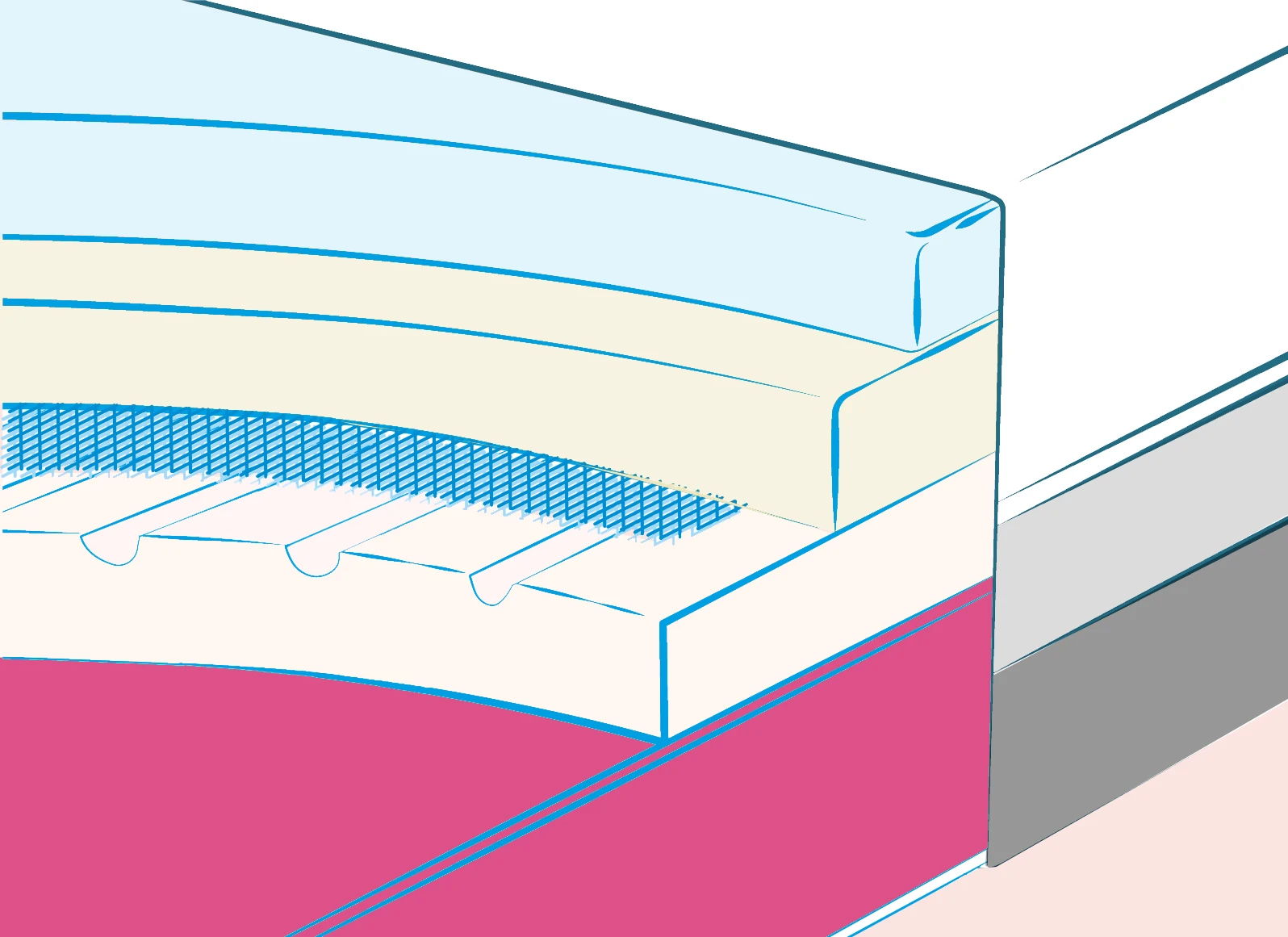To provide services at the highest level, we use cookies. Using the website requires you to choose settings related to their storage on your device. If you want to know what each type of cookie is used for, click the Details button below.
Does mattress thickness matter?25 grudnia 2023 |

The height of the mattress matters for those that are meant to be comfortable and provide a healthy sleep. They should be constructed in layers, similar to a cake. It's important to choose mattresses of the right thickness. The best ones are those of medium height, usually ranging from 20 centimeters to 23 centimeters. Such a mattress provides balanced support for the body by combining the functionality of different layers.
A good foam mattress should have a thickness between 20-23 centimeters and consist of 4-5 layers. It should have a structure similar to a cake, with each layer providing different functionality. Thin mattresses are unlikely to be functional, and thicker ones won't gain additional functionality due to their height. The optimal height is 21 centimeters, as seen in the Osaka Air foam mattress. This provides comprehensive support for different areas of the body.
The mattress should protrude above the bed frame enough to maintain proper aesthetics but at the same time be easy to fit. Generally, it is recommended that the mattress protrude no more than a few centimeters above the bed frame. For good and functional mattresses, these recommendations are practical and aesthetic, as they do not affect the mattress itself and its use.
It is considered that a suitable mattress height is around 20-23 centimeters. Additionally, it should consist of 4-5 layers, with each layer providing different functionality.
Yes, mattress height matters, especially if you prioritize healthy and comfortable sleep. Mattresses built with multiple layers offer optimal levels of support and customization, with each layer contributing to the overall functionality of the mattress. It's important to choose mattresses that meet individual sleep needs and allow for maintaining the correct body posture. Paying attention to the Osaka Air foam mattress, which is a versatile solution, is worth considering.